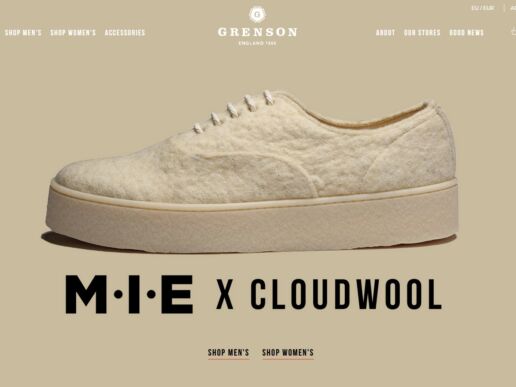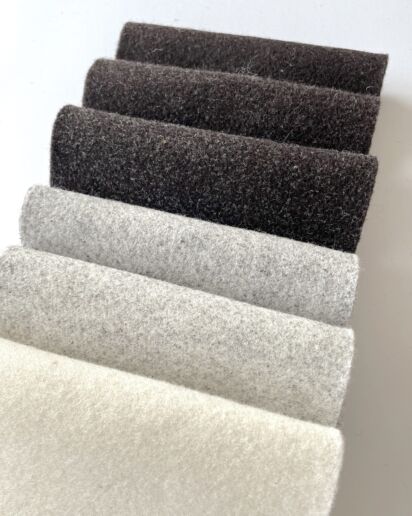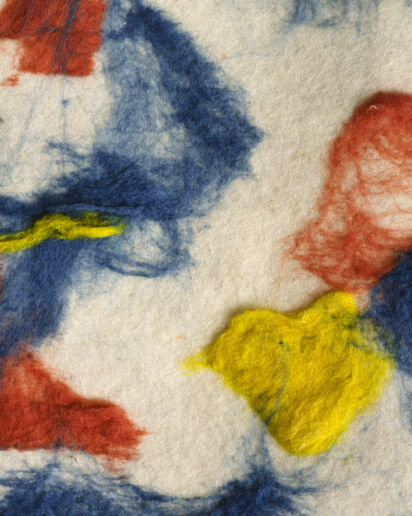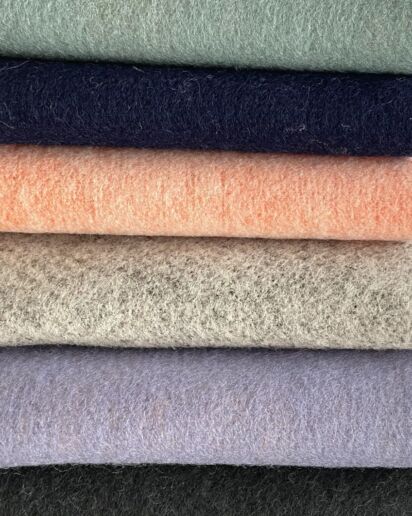Cloudwool, presented by Martin Brambley, is an oasis of sustainability in the textile universe, introducing pure, local wool of new quality to the market. The projects name symbolises not just an island in the sky but also the unity of environmentally conscious production and high-quality materials.
In a time where natural wool is often imported and blended with synthetic fibers, Cloudwool relies on local resources and fights against the neglect of local sheep farmers’ wool. The sustainable angle of Cloudwool emerges from the desire to bring local fibers to the market in new and exciting forms. The 100% local wool, typically considered waste, is transformed into a super-soft and durable fabric through nonwoven technology – without burdening the environment. Natural, breathable, and comfortable, Cloudwool integrates the natural properties of wool into the material to make it as exceptional as possible.


From farm to fabric, Cloudwool relies on local resources, creating a traceable supply chain in collaboration with European sheep farmers. The company pays farmers up to 5 times more than the market price for their wool and produces Cloudwool locally using energy-efficient processes. Together with Cloudwool, you’re not just shaping clothing but also reshaping silhouettes and textures. This isn’t just ordinary wool fabric – with more personality and far fewer post-processing possibilities, the potential is endless.
Doppelhaus, the company behind Cloudwool, was founded by Martin Brambley and Yolanda Leask. In a world where sustainable fashion must be affordable, they are committed to creating sustainable materials for a circular, low-carbon fashion industry of the future. Their innovative approach utilizes efficient nonwoven textile production techniques in line with Cradle-to-Cradle principles.



———————————————————————–
THIS MIGHT BE ALSO INTERESTING FOR YOU
The Power of Data: Understanding How Data Tackles Challenges in the Textile Industry
31. January 2025
Data might feel intimidating for the fashion and textile industry, but it holds the power to unlock transparency, boost efficiency, and spark innovation...
MUNICH FABRIC START & BLUEZONE – Essence of Innovative Design & Smart Strategies in Challenging Times
24. January 2025
FLORESCENCE describes the phase in which plants reach their full bloom and is used as a general metaphor for the process of blossoming.
Additionals Trends Spring.Summer 26 – Part 8
20. January 2025
Trims and packaging are branding items we shouldn’t take for granted – they are a signature that transforms the ordinary into the unforgettable.




